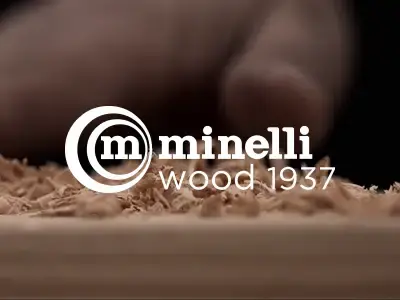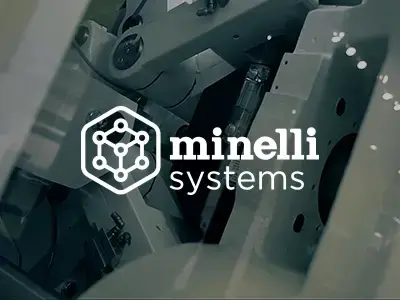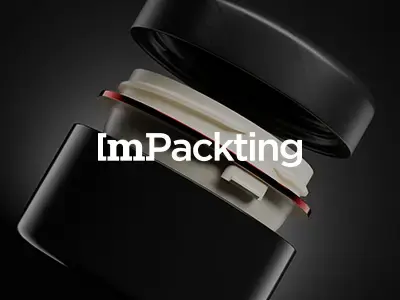 In the realm of wood parts manufacturing, staying updated with emerging trends is crucial to maintain a competitive edge. One trend gaining traction is the production of items that while having a wooden core feature an exterior that mimics plastic. Let’s dive into this topic in today’s article!
In the realm of wood parts manufacturing, staying updated with emerging trends is crucial to maintain a competitive edge. One trend gaining traction is the production of items that while having a wooden core feature an exterior that mimics plastic. Let’s dive into this topic in today’s article!
Wood parts manufacturing as an investment for suppliers
Using FSC-certified wood (Forest Stewardship Council) offers numerous benefits over plastic both economically and environmentally. First, FSC certification ensures that the wood comes from sustainably and responsibly managed forests, which guarantees proper reforestation and biodiversity preservation.
From an economic standpoint, wood processing doesn’t require the creation and use of expensive molds like plastic does. These molds represent a significant investment that is often out of reach for small and medium-sized businesses. By choosing wood, companies can substantially reduce initial production costs.
Furthermore, from an environmental perspective, plastic has significantly adverse effects. It’s derived from petroleum, a nonrenewable resource, and its production releases harmful substances into the environment.
Additionally, once used, plastic takes centuries to decompose, which contributes significantly to ocean pollution and waste accumulation. In contrast, wood is biodegradable, renewable, and when sourced from such certified providers as FSC, it is a responsible and sustainable choice.
Choosing FSC wood demonstrates not only a commitment to environmental protection and sustainability but also a smart economic decision. It allows companies to avoid significant costs associated with plastic production and positions them as pioneers in the eco-responsible market.
So, why would a customer want a wood product that looks like plastic?
Primarily, there are two types of customers:
1. Customers who value the essence of woodThese customers love wood’s naturalness and value. They appreciate its scent, the different shades of its colors, and its texture. Hence, they focus on the variety of wood types, its authentic scent, and the range of colors it offers.
.jpg?width=500&height=334&name=Th-metal-candy-3%20(1).jpg)
While preferring to use wood for various reasons, some customers don’t want it to be visible in the finished product. These customers might have different needs beyond just saving on investments.
Let’s delve deeper into these needs.
Green positioning: we live in an era when sustainability has become a priority for many consumers and businesses. Choosing wood, especially FSC certified, underscores a commitment to forest conservation and responsible resource management. Many clients aim for a positive ecological footprint by choosing FSC-certified wood. For a more urban and fresher look, however, they choose to coat the wood with water-based paints that make it look like plastic, thus maintaining their eco-responsibility.
Product consistency: the intrinsic variety of wood can lead to minor imperfections or variations. Being a natural material, it might display variations in shade, grain, or slight imperfections. By covering wood with a consistent paint, companies can ensure a homogeneously appearing end product.
Product look and performance: in some cases, wood is merely a means to achieve a particular performance. For instance, certain coatings perform better on wood than on plastic, ensuring longer product life, resistance to weather elements, or a glossier, more appealing finish. This is especially true in professional sectors, such as hairstyling.
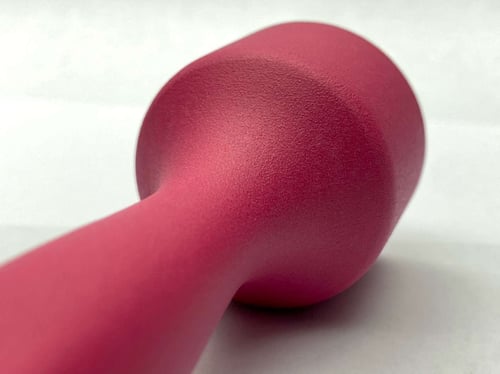
Brand identity: many companies boast a history and tradition of wood production, but to compete in modern markets, they may feel the need to update their image without betraying their roots. A “plastic” finish on wood allows just that.
Wood that doesn’t look like wood in diverse industries
This trend is permeating various wood parts manufacturing sectors, ranging from the production of brushes and children’s toys to perfume and cosmetics packaging to the outdoor world of gunstocks.
Wood that “doesn’t look like wood” represents a perfect blend of tradition and modernity, sustainability, and design.
Leveraging this trend with innovation and skill can unlock new market opportunities for wood component manufacturers and cater to a broader and diversified audience.
Let’s look at some examples.
In the world of children’s toys, creating objects made of wood that look like they’re made of plastic can be an opportunity to cater to children’s desires for brightly colored and appealing toys while still producing a high-quality and sustainable product.
Regarding brushes and paintbrushes, for instance, it’s possible to leverage the properties of wood for special finishes. Below, you can see an image of a product with a soft touch finish, which lasts longer on wood compared with the same treatment applied to plastic.
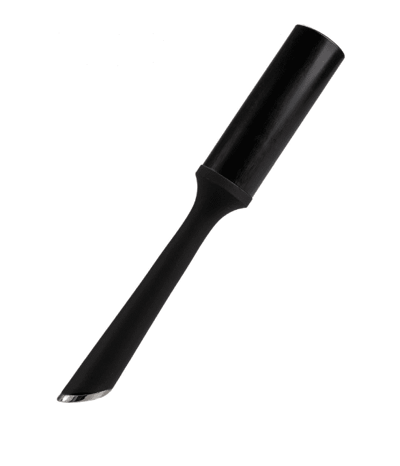
As for packaging, when runs are limited, the investment for a plastic mold would be overly expensive. Creating a product in wood and painting it to look like plastic allows suppliers to achieve significant savings on initial investment costs.
As for gunstocks, eventually, the most groundbreaking finishing methods let you create custom gunstocks with a wooden core, covered in a polymer paint, and offering a plastic-like appearance but retaining wood’s advantages. This technology eliminates the need for costly molds, offers vast customization options, and is more flexible in production. Additionally, these stocks are more durable, provide superior recoil absorption, and are environmentally friendlier than synthetic alternatives.
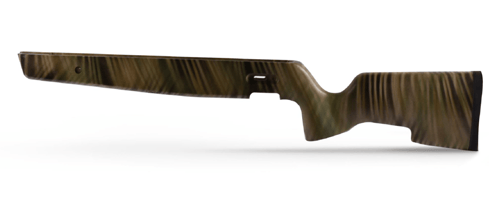
The reasons to use wooden components with a plastic-like aesthetic are varied and reflect the diverse needs and visions of companies, but all revolve around the desire to blend tradition with innovation and sustainability with design.
Only a wood parts manufacturing company that is at the forefront of technology and pours significant resources into bespoke wood crafting as well as ensuring they have the latest equipment and are rooted in automation, connectivity, machine learning, and real-time insights can deliver high-quality wooden items at competitive prices.
Leveraging state-of-the-art software, modern machinery, a blend of manual and automated quality checks, and years of expertise in wood crafting, the Minelli company stands out in ensuring unparalleled precision. Every production line is equipped with CNC machinery, robotic arms, automated mechanisms, and is overseen by seasoned experts adept in every aspect of the manufacturing process.
Additionally, given certain conditions, we can create a custom production line tailored to our clients’ specifications to ensure optimal efficiency. For more details, feel free to contact us!
